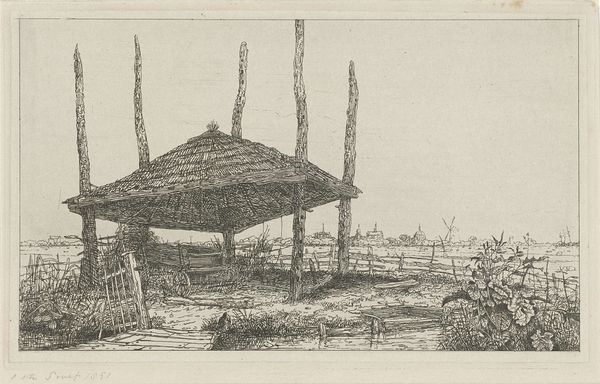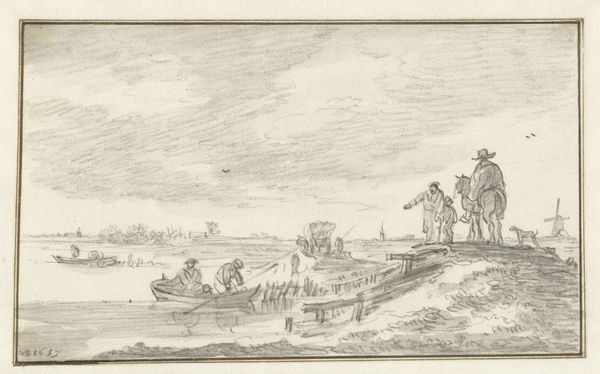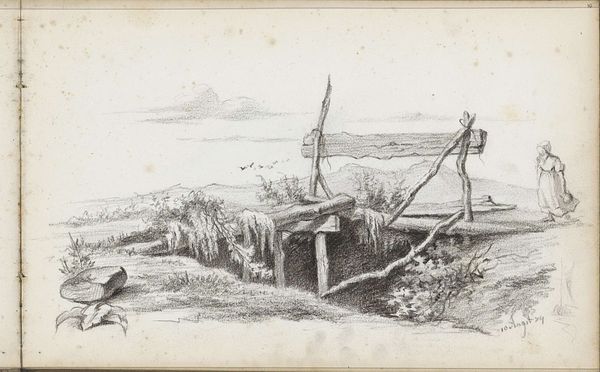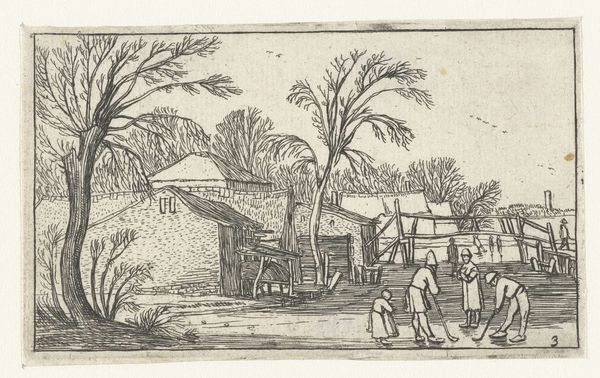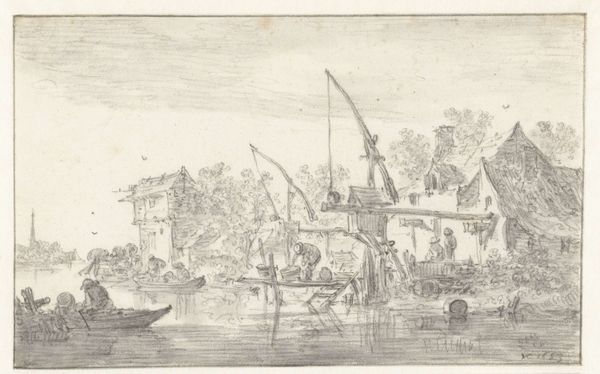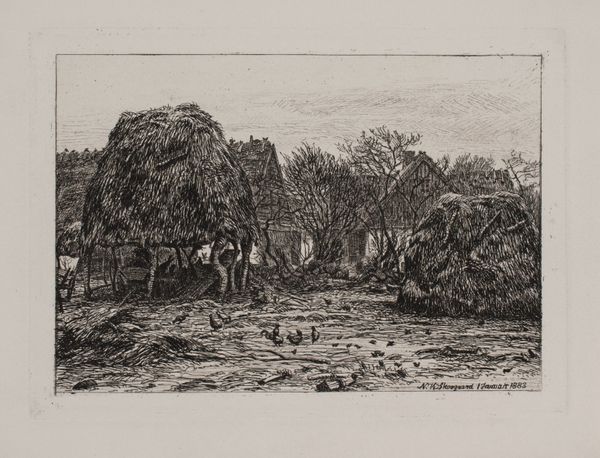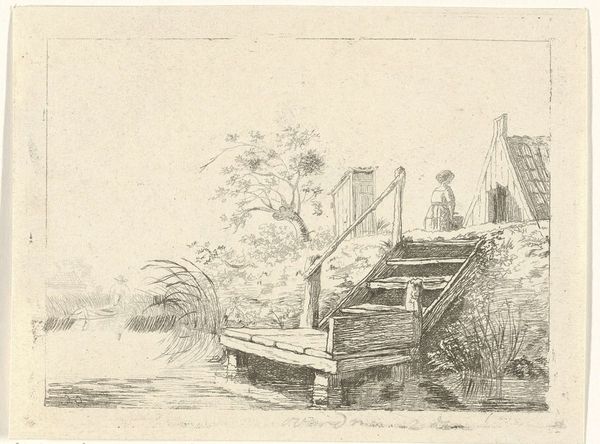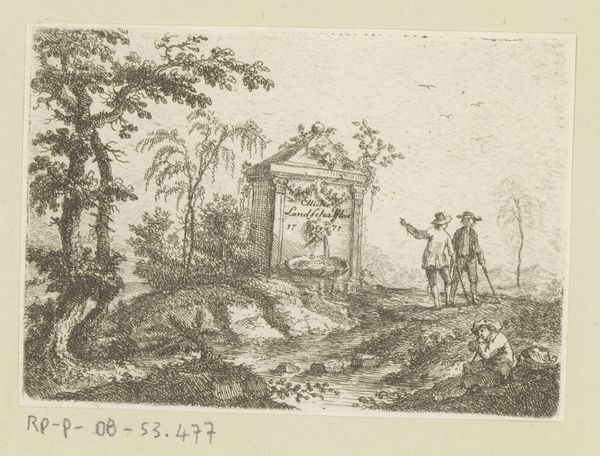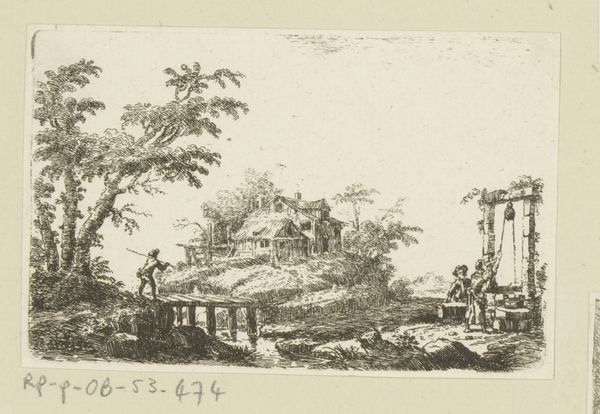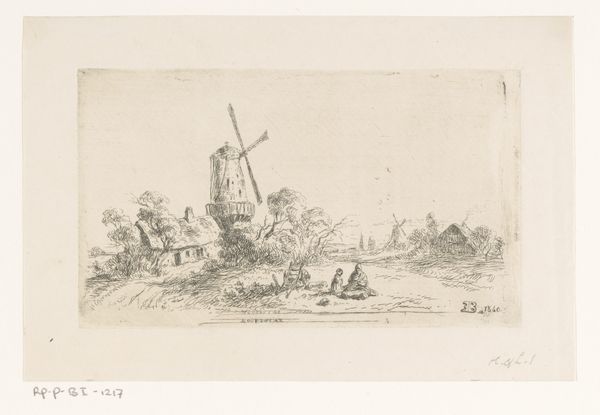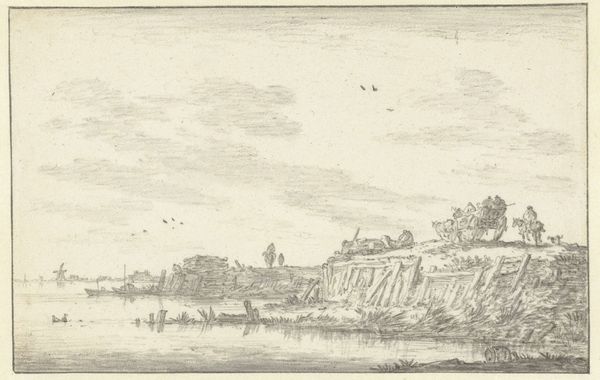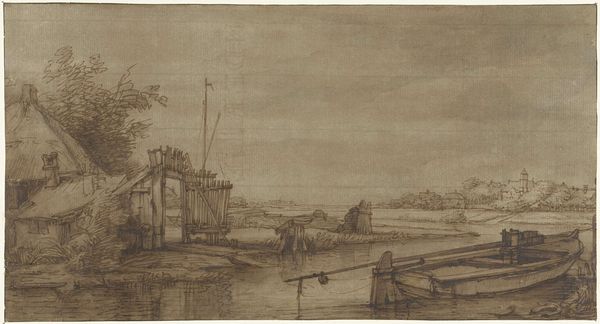
drawing, ink
#
drawing
#
dutch-golden-age
#
pen sketch
#
landscape
#
ink
Dimensions: height 68 mm, width 90 mm
Copyright: Rijks Museum: Open Domain
Curator: Here we have Esaias van de Velde’s "Brewery on the Banks of a River," dating from 1614. It's currently housed here at the Rijksmuseum. Editor: My first impression is its idyllic, almost melancholic mood. The muted palette of ink on paper lends it a serene quality, despite the implied industrial activity. Curator: The materiality of the piece – the ink and paper – plays a significant role, doesn't it? Van de Velde uses precise, yet delicate strokes to build texture, defining forms like foliage, water, and architectural features. It gives a certain sense of depth despite being nearly monochromatic. Editor: Absolutely. And think about the rise of breweries in the 17th century; they become vital not just to the economy but also central social spaces, part of the burgeoning urban and rural fabric of the Dutch Golden Age. Artists like van de Velde played a part in promoting the idea of a strong economy tied to a flourishing society, wouldn't you say? Curator: An interesting consideration. From a purely formal perspective, I am drawn to how van de Velde utilizes line to suggest light. Notice how he subtly manipulates the density and direction of strokes to imply illumination, creating soft, diffused lighting effects. Editor: Precisely, but it also reflected something about Dutch society then, that ability to manipulate environments in the landscape. Even within the seemingly calm river bank, look at that loading crane, a monument to emerging mercantile trade and expanding social economies. This reminds people where resources are derived. Curator: Yes. Also, look closely at the horizon line - its asymmetry helps emphasize the height and presence of the brewing infrastructure in the left of the picture while still leaving room to contemplate depth in the right with light shining down on the water and shore line. Editor: The placement surely served as a commentary on the changing social order. In fact, depictions of industries are not commonly deemed important at the time and suggest society at large wanted a view into what they bought or where trade and economic activity take place. Curator: Studying Van de Velde's drawing reveals the essence of visual rhetoric. How line, form, and light work together to create an intricate landscape imbued with serene yet contemplative beauty. Editor: Indeed, a window into both the aesthetics of its time and a developing understanding of economic and cultural values in 17th-century Netherlands. It helps us see a landscape but also understand something bigger happening beyond just the landscape.
Comments
No comments
Be the first to comment and join the conversation on the ultimate creative platform.
